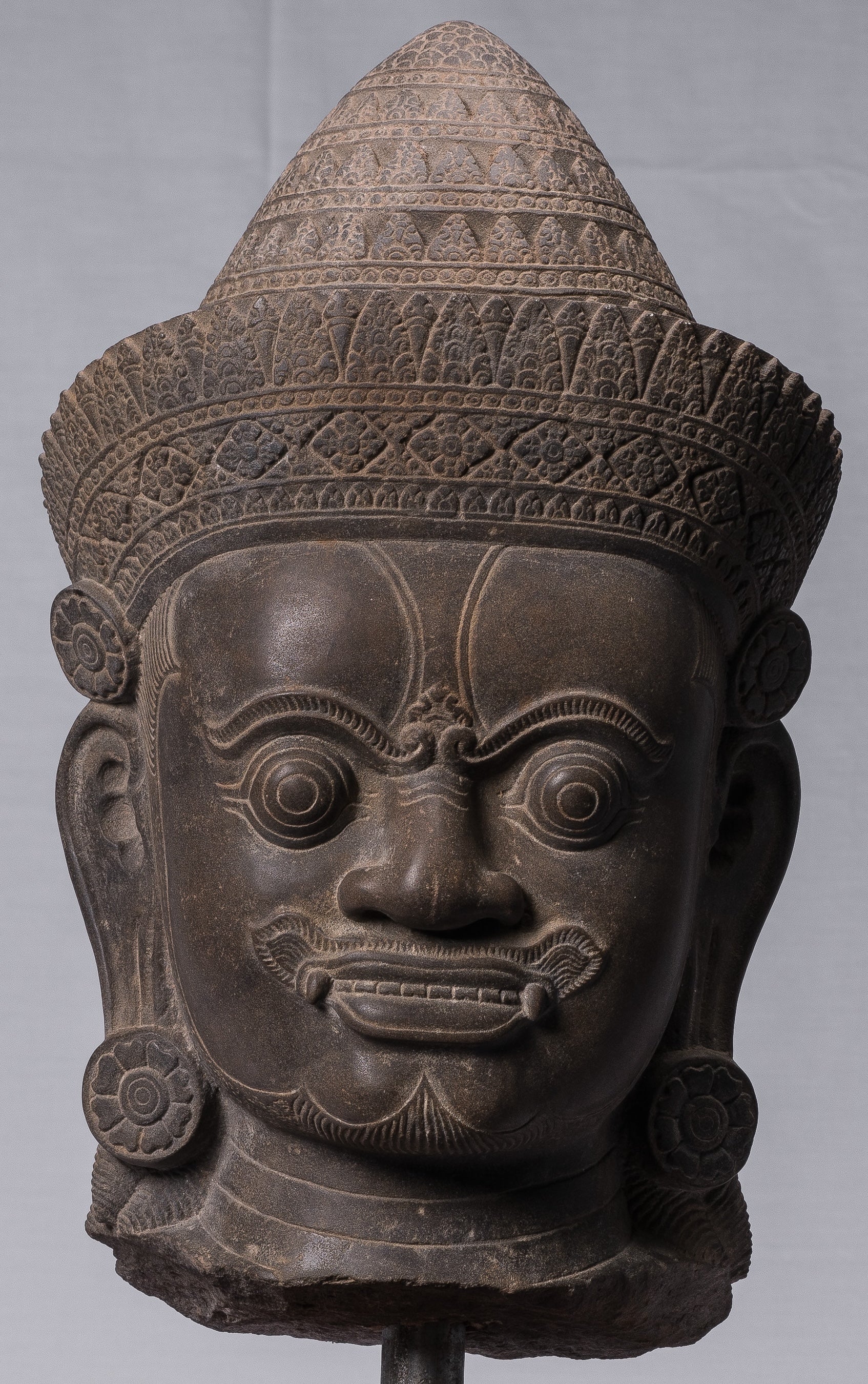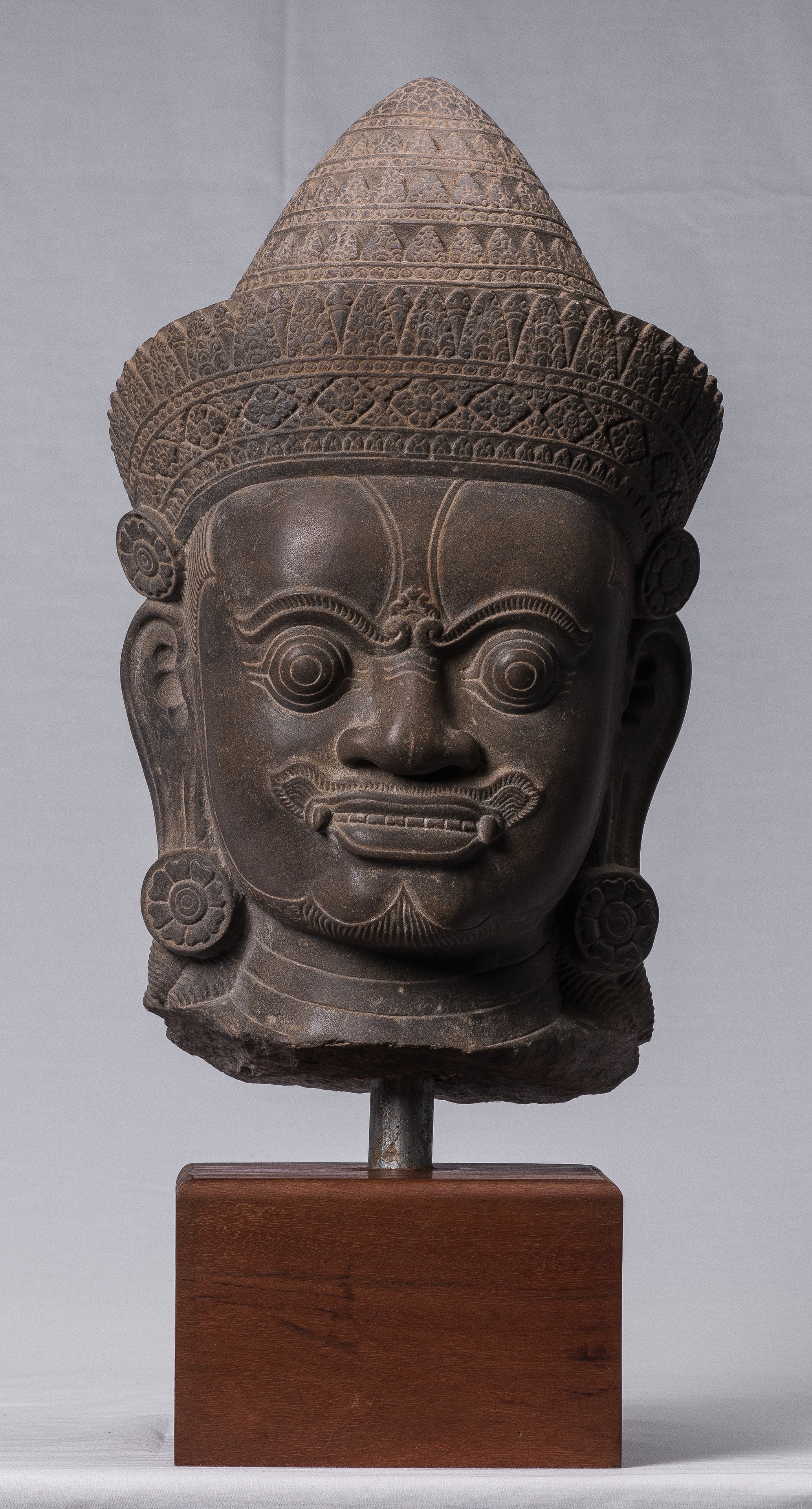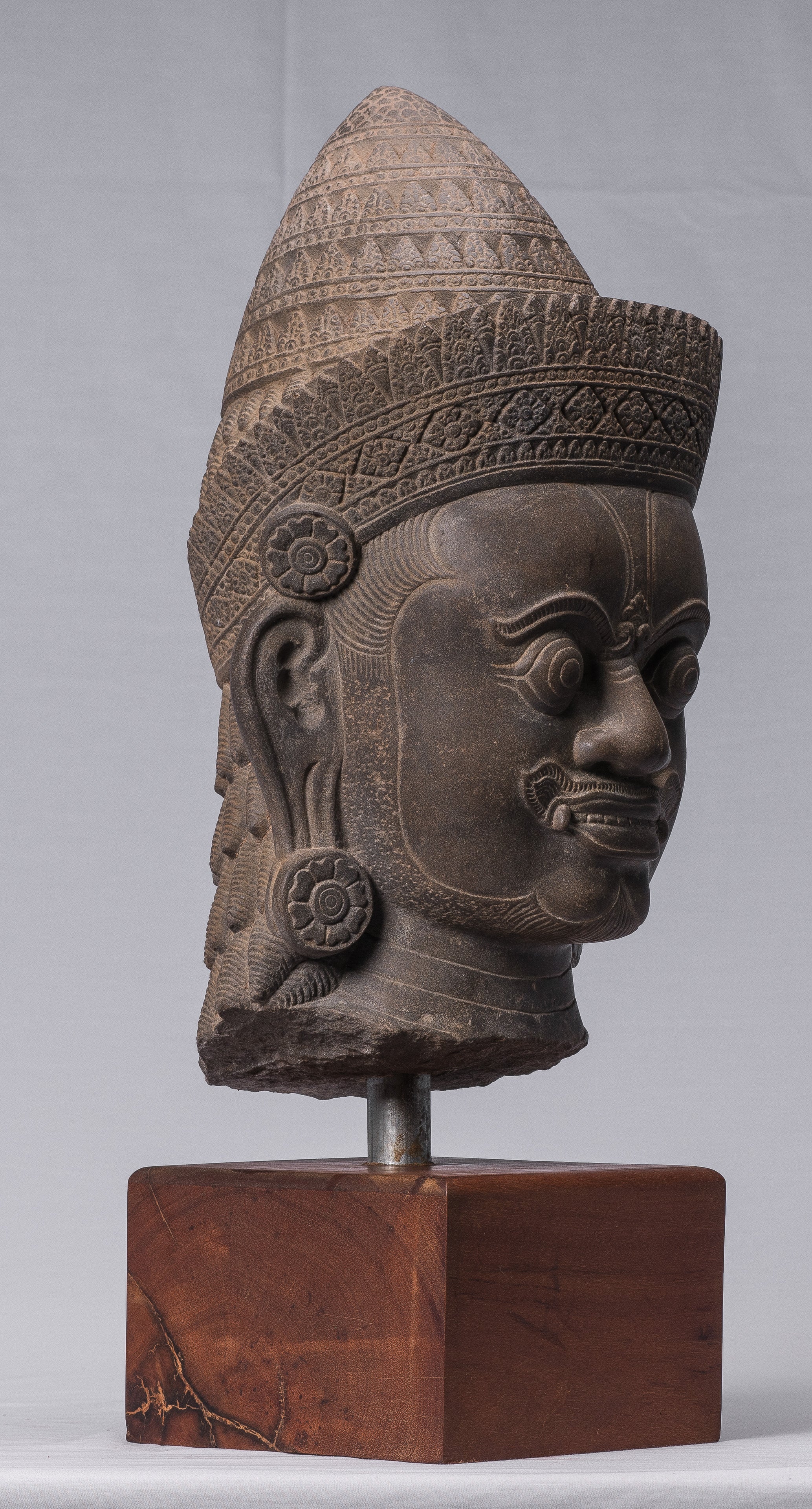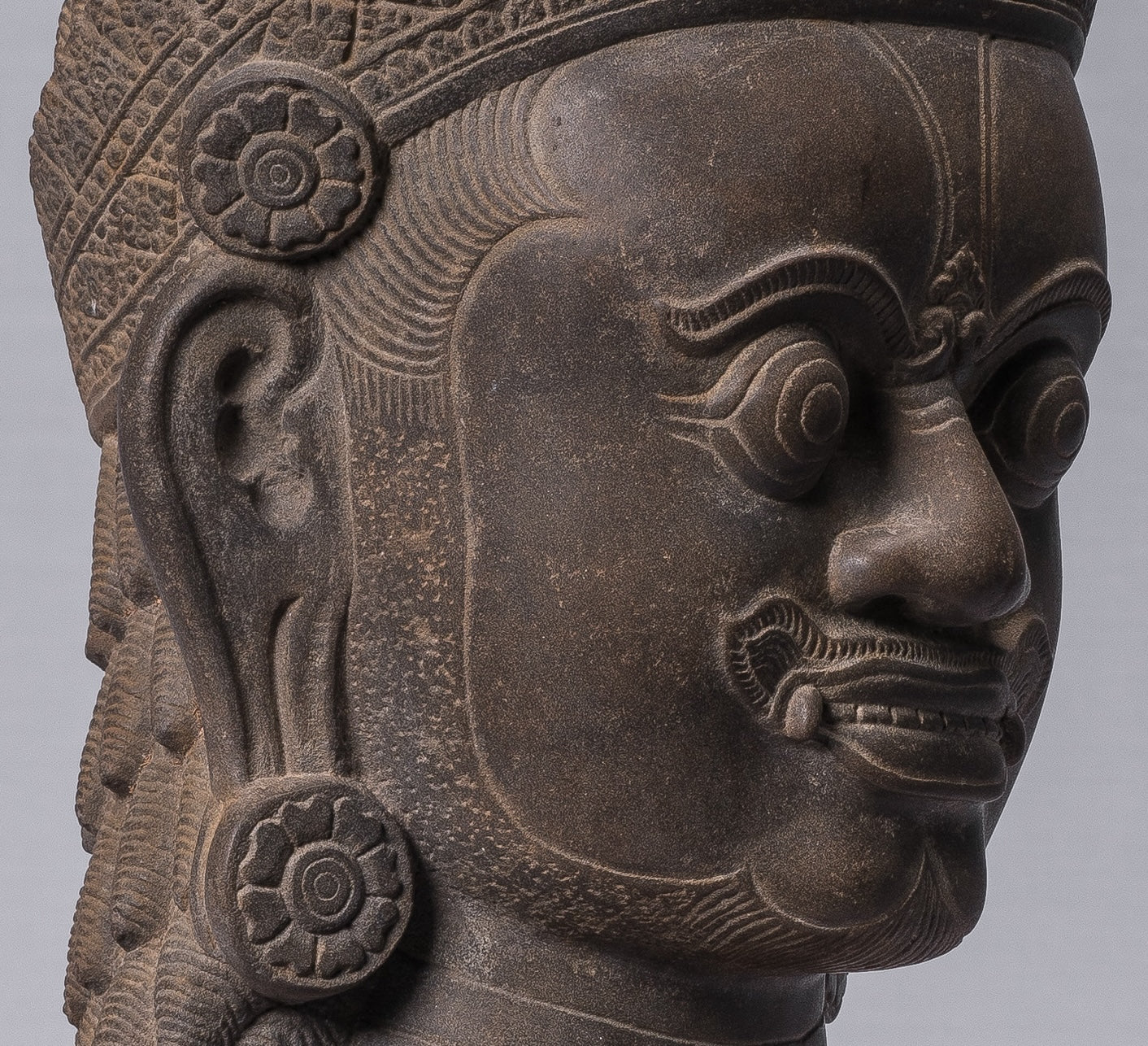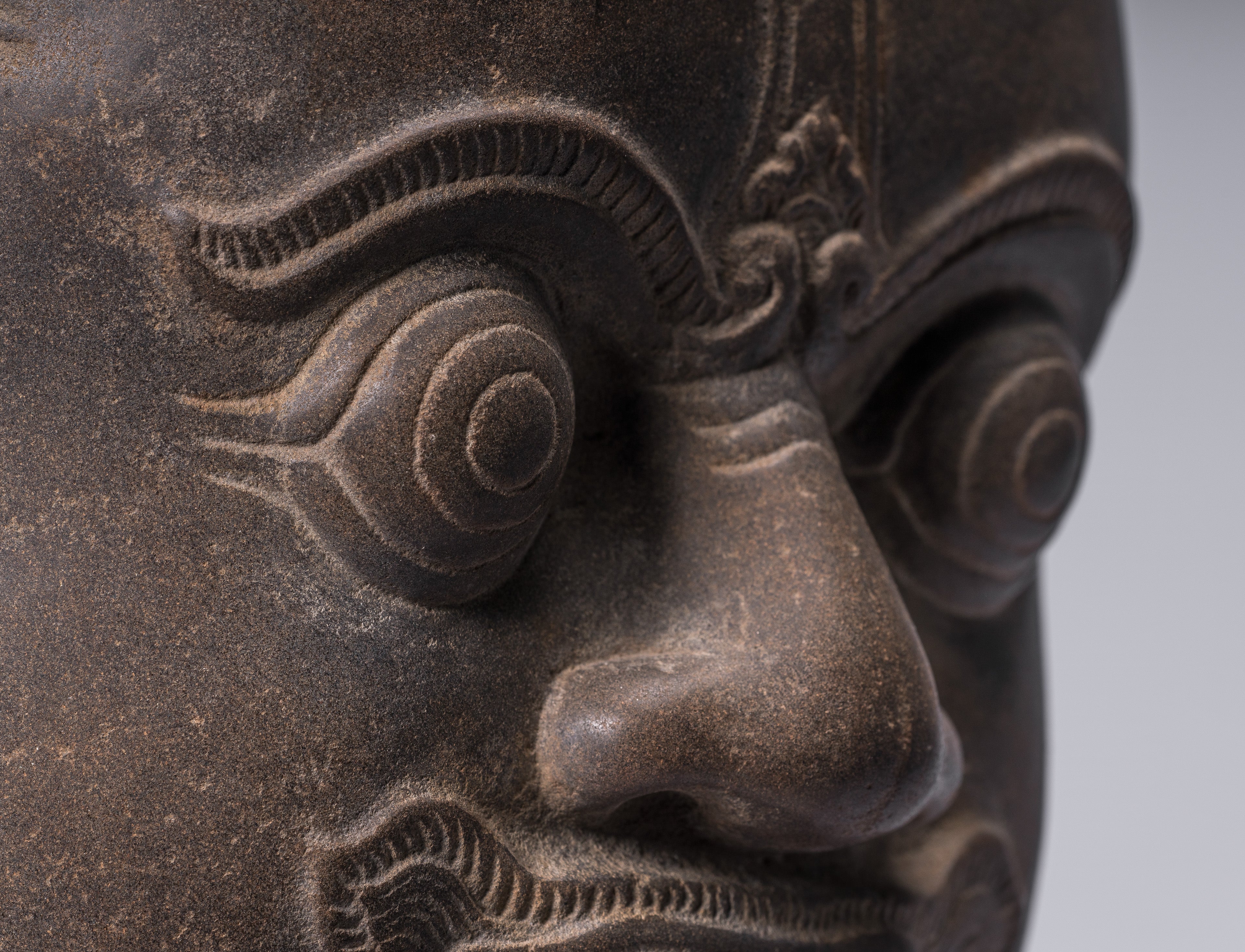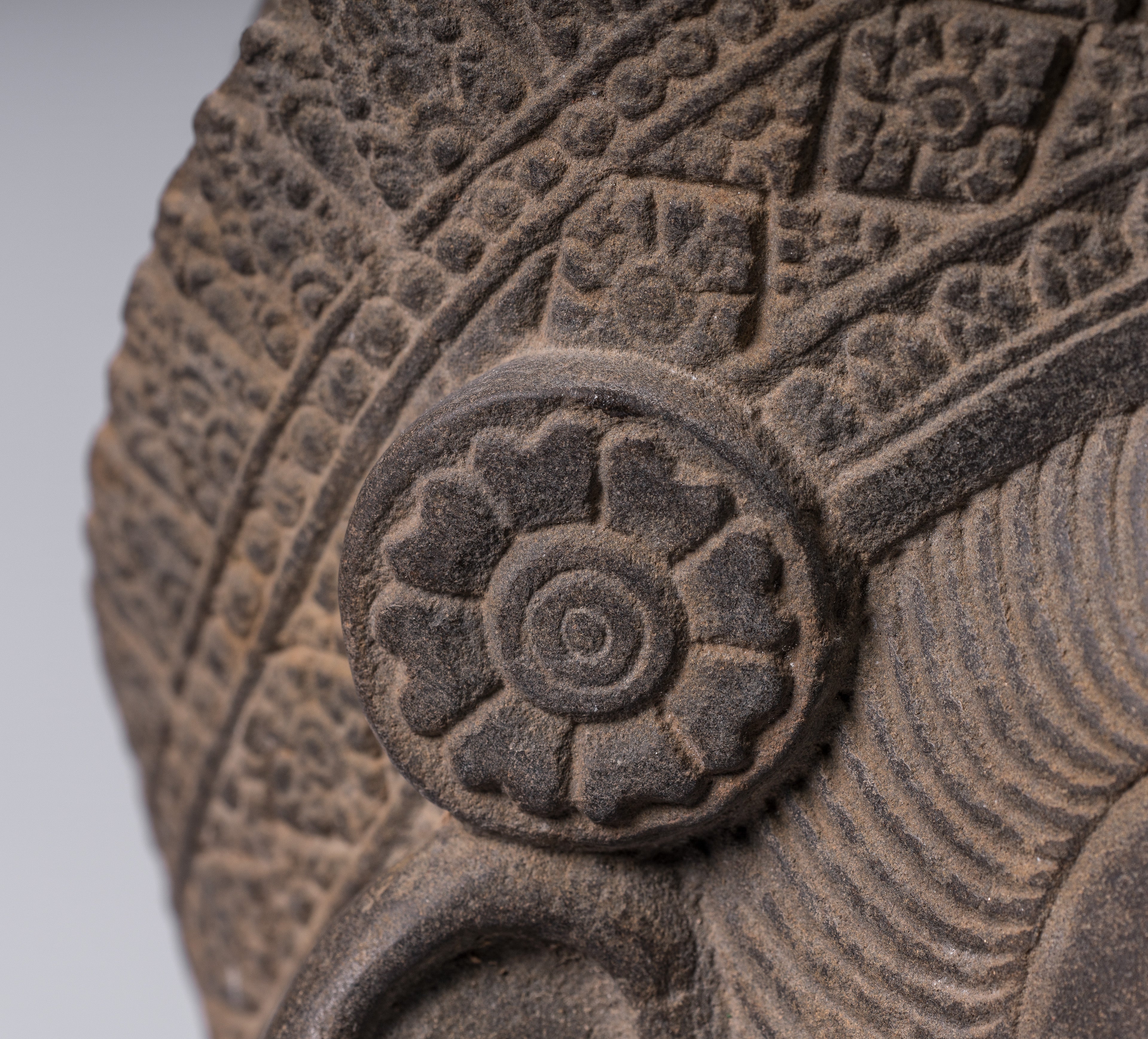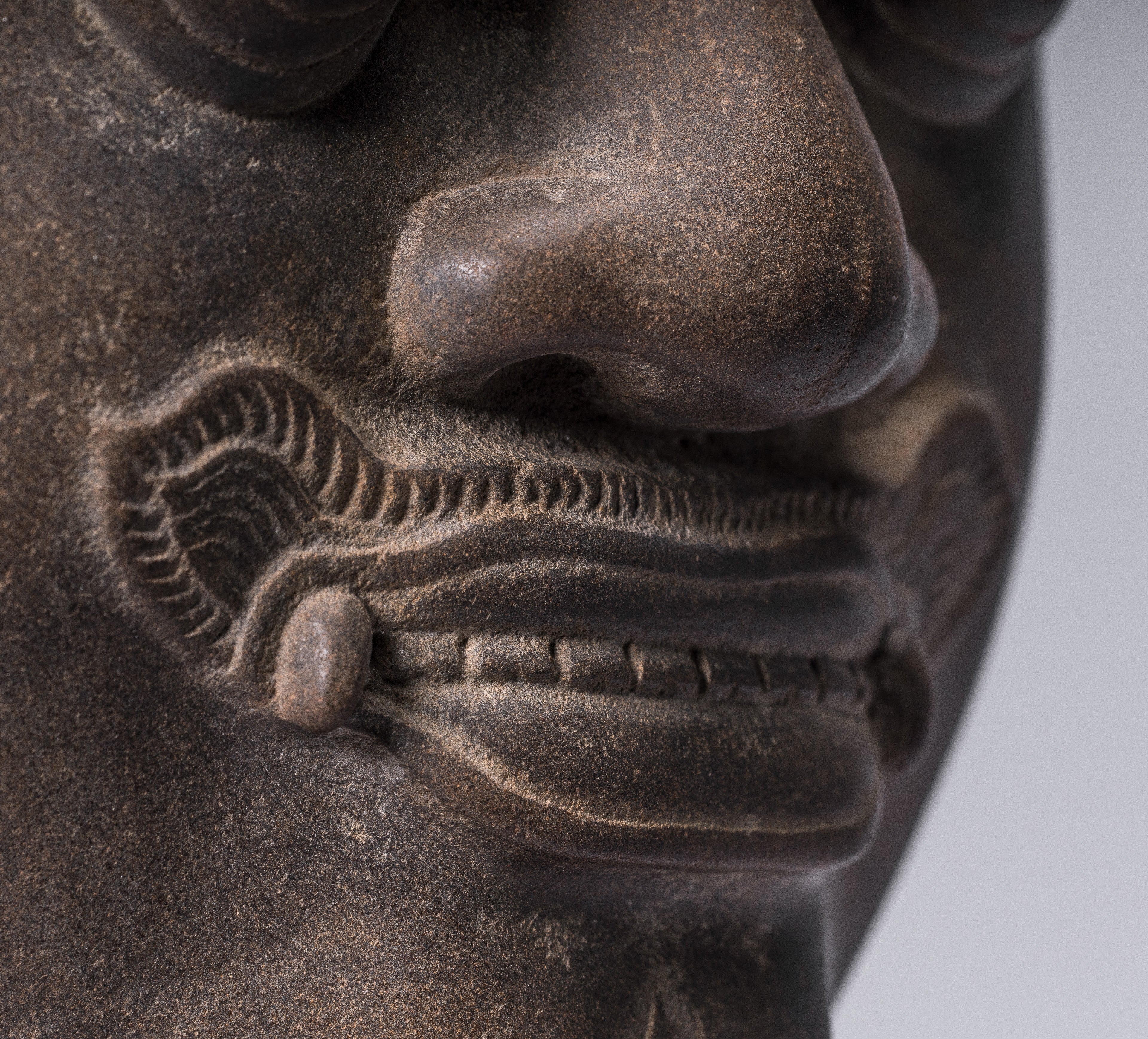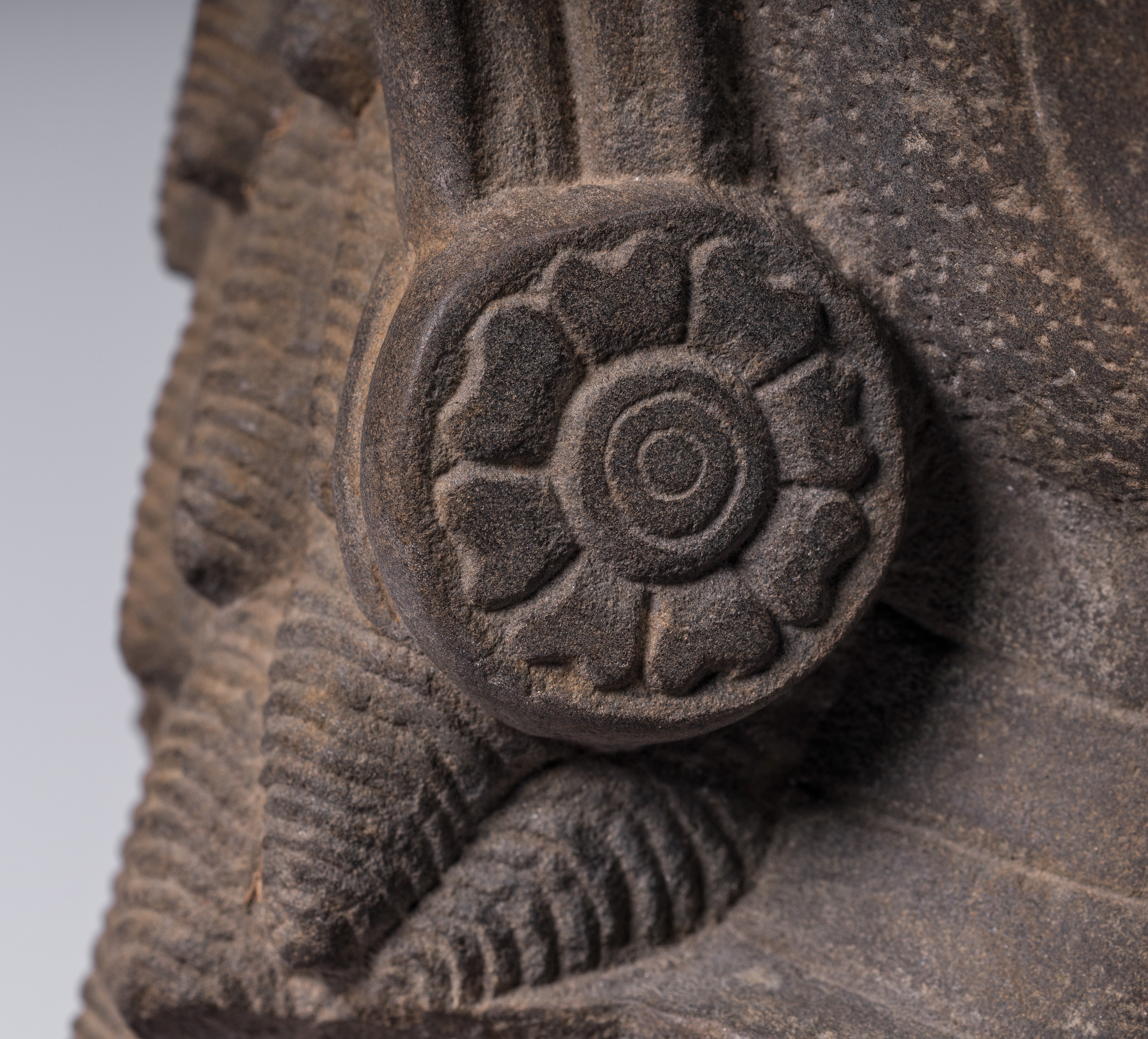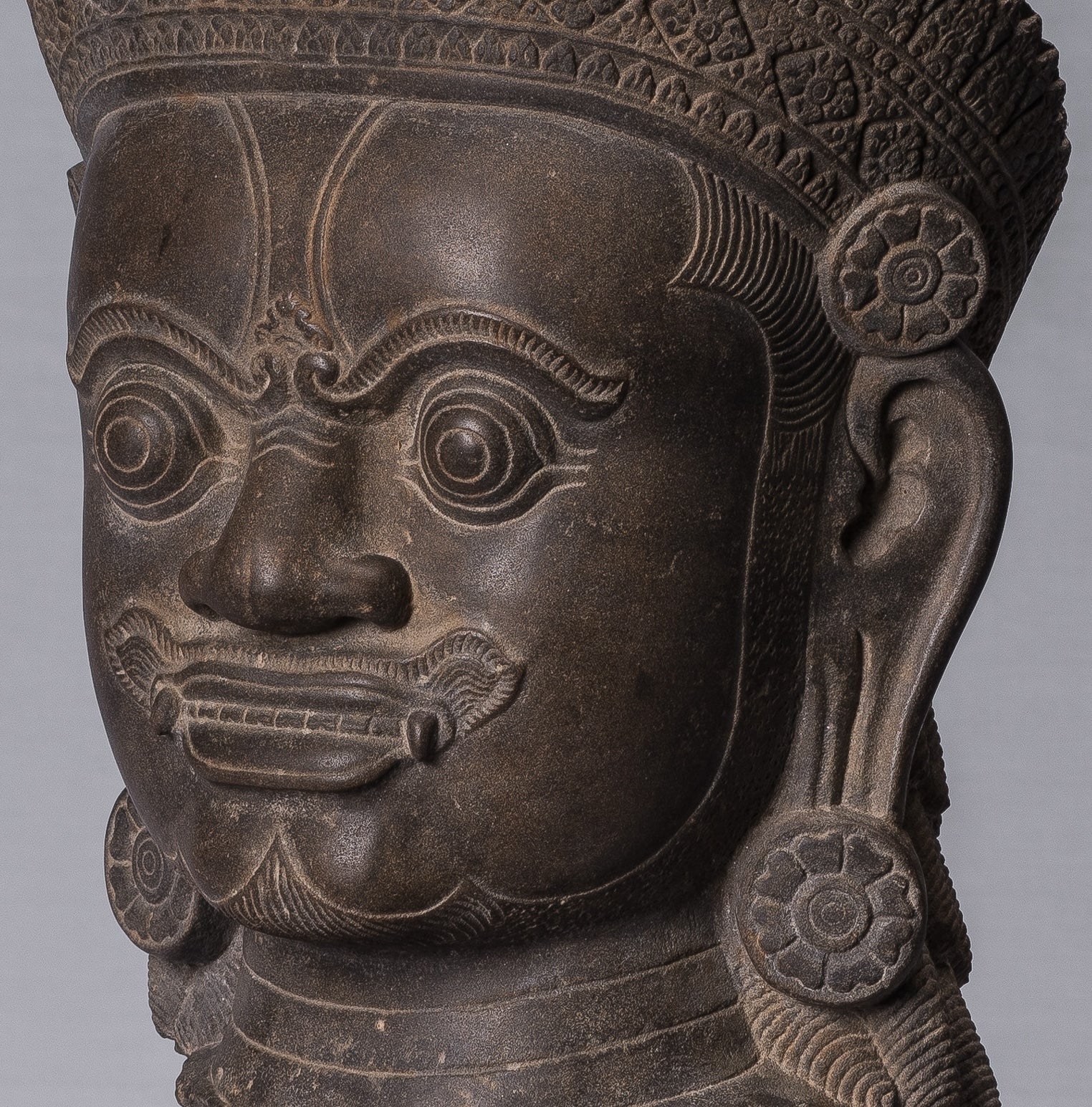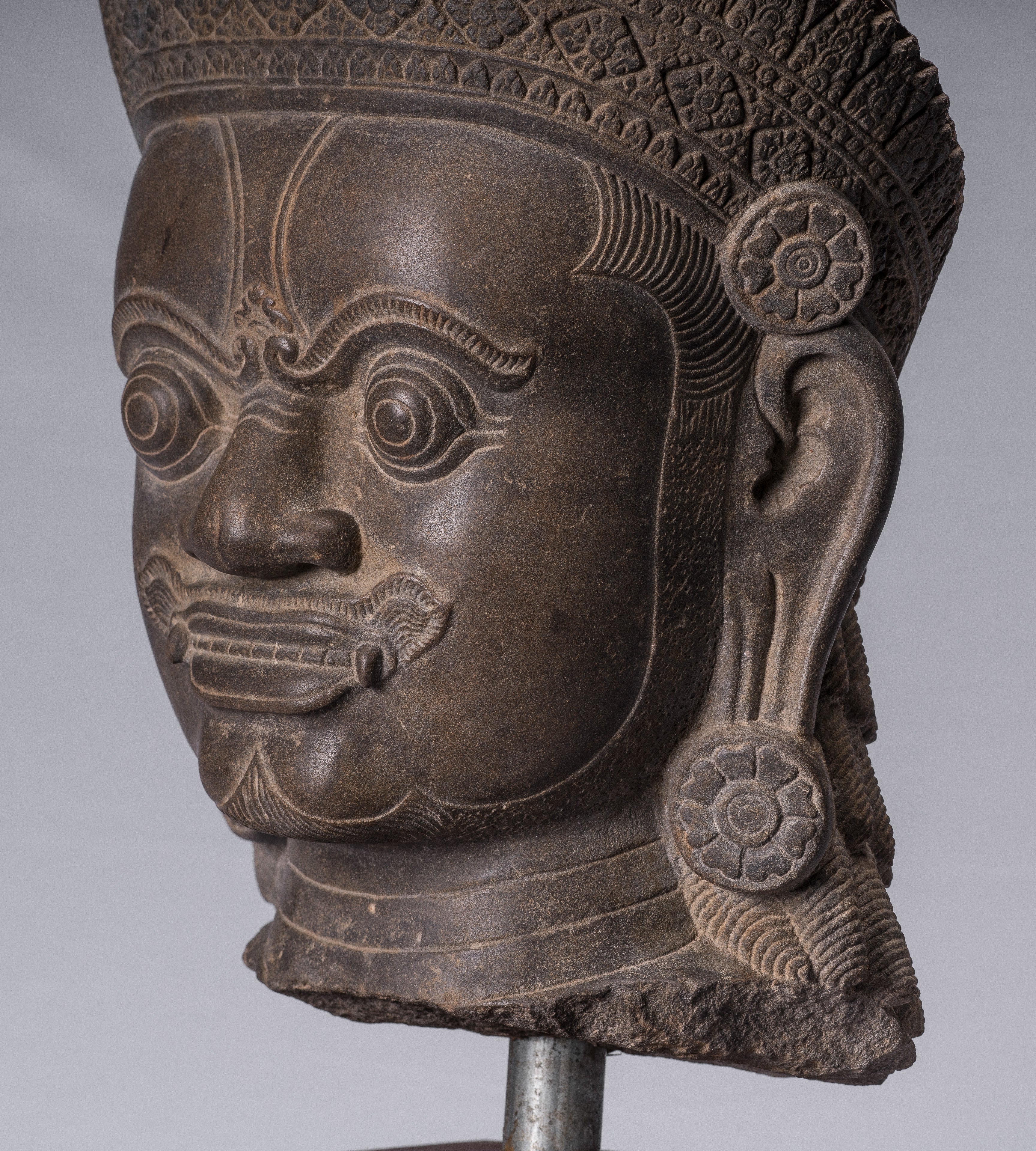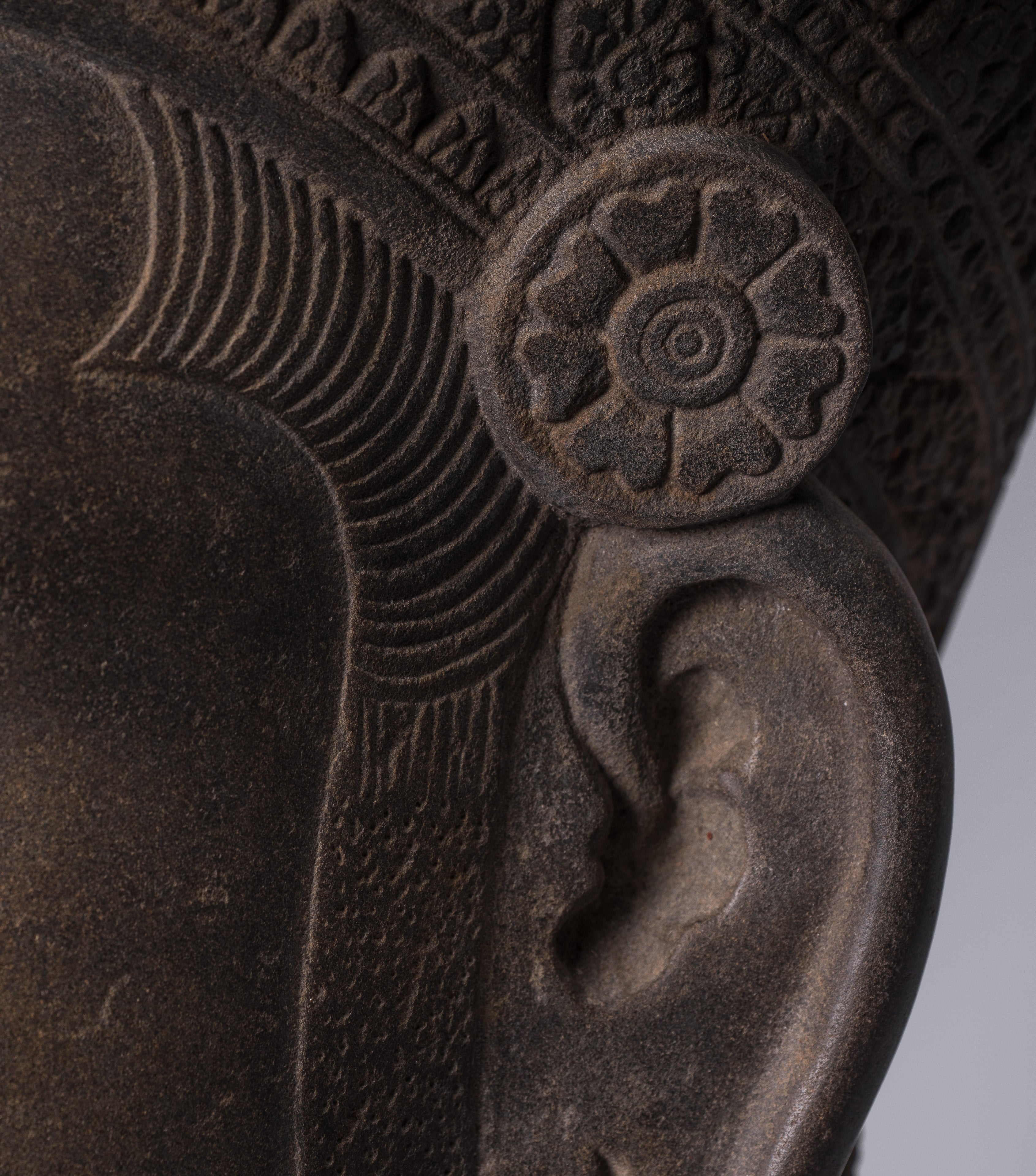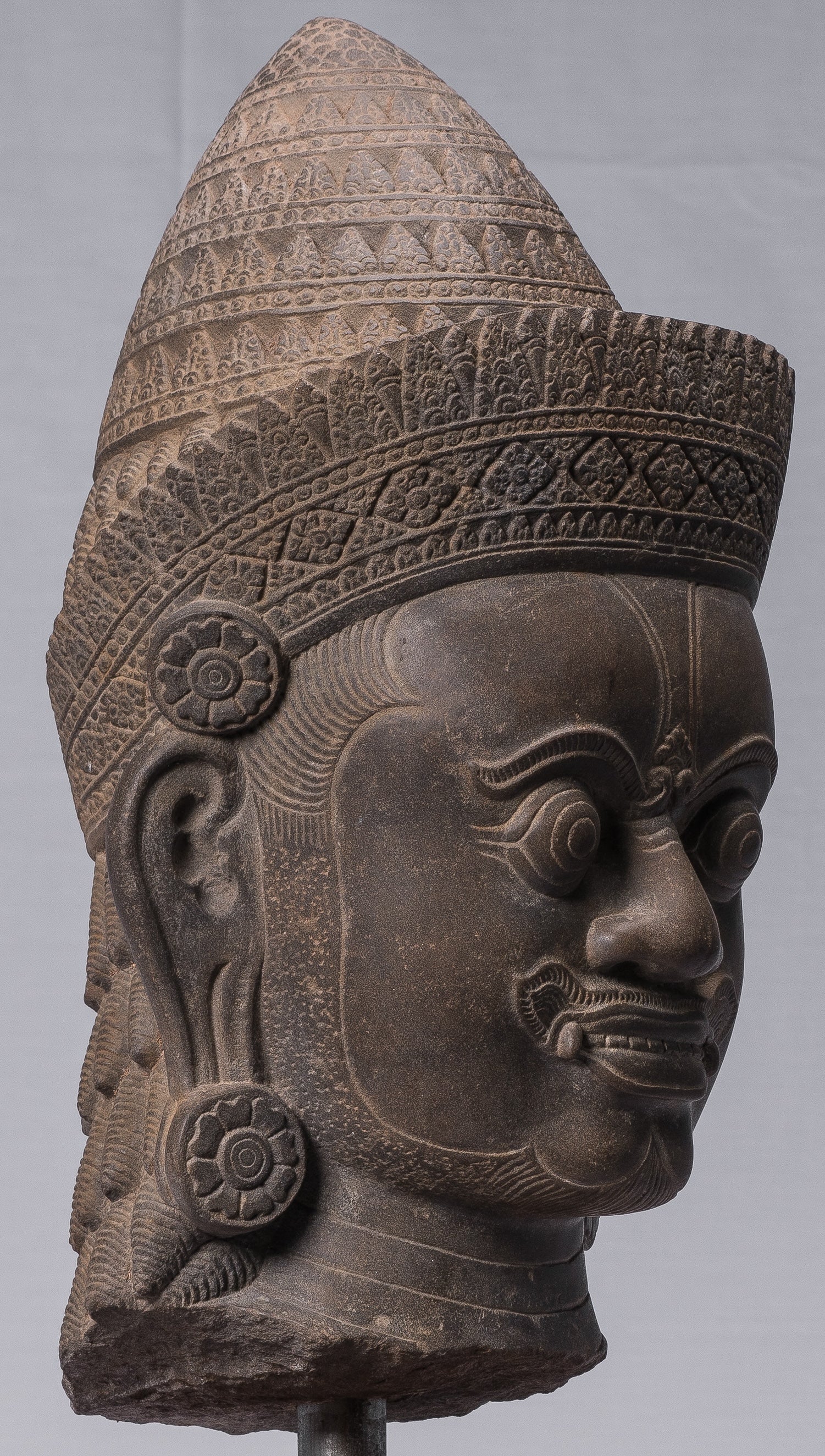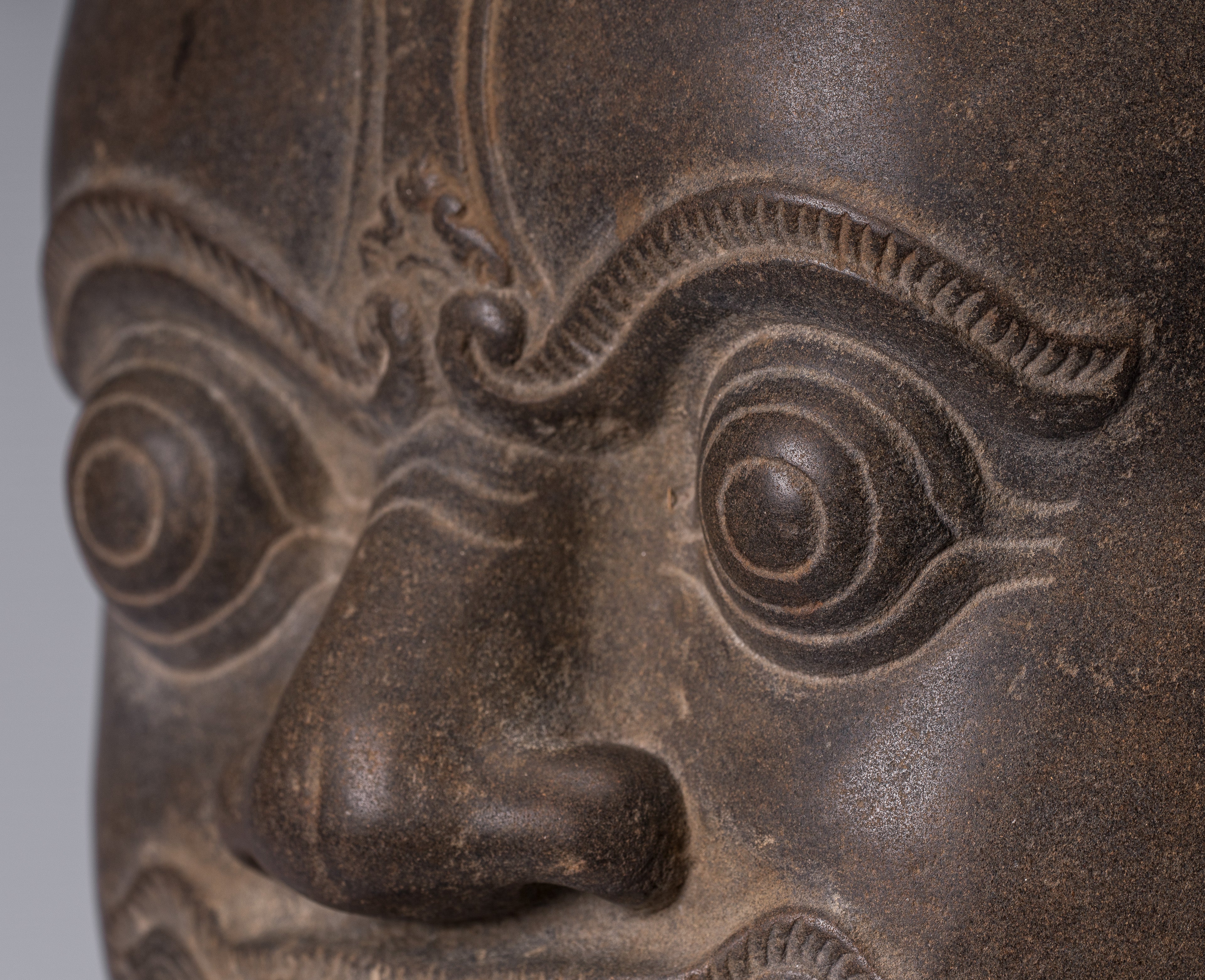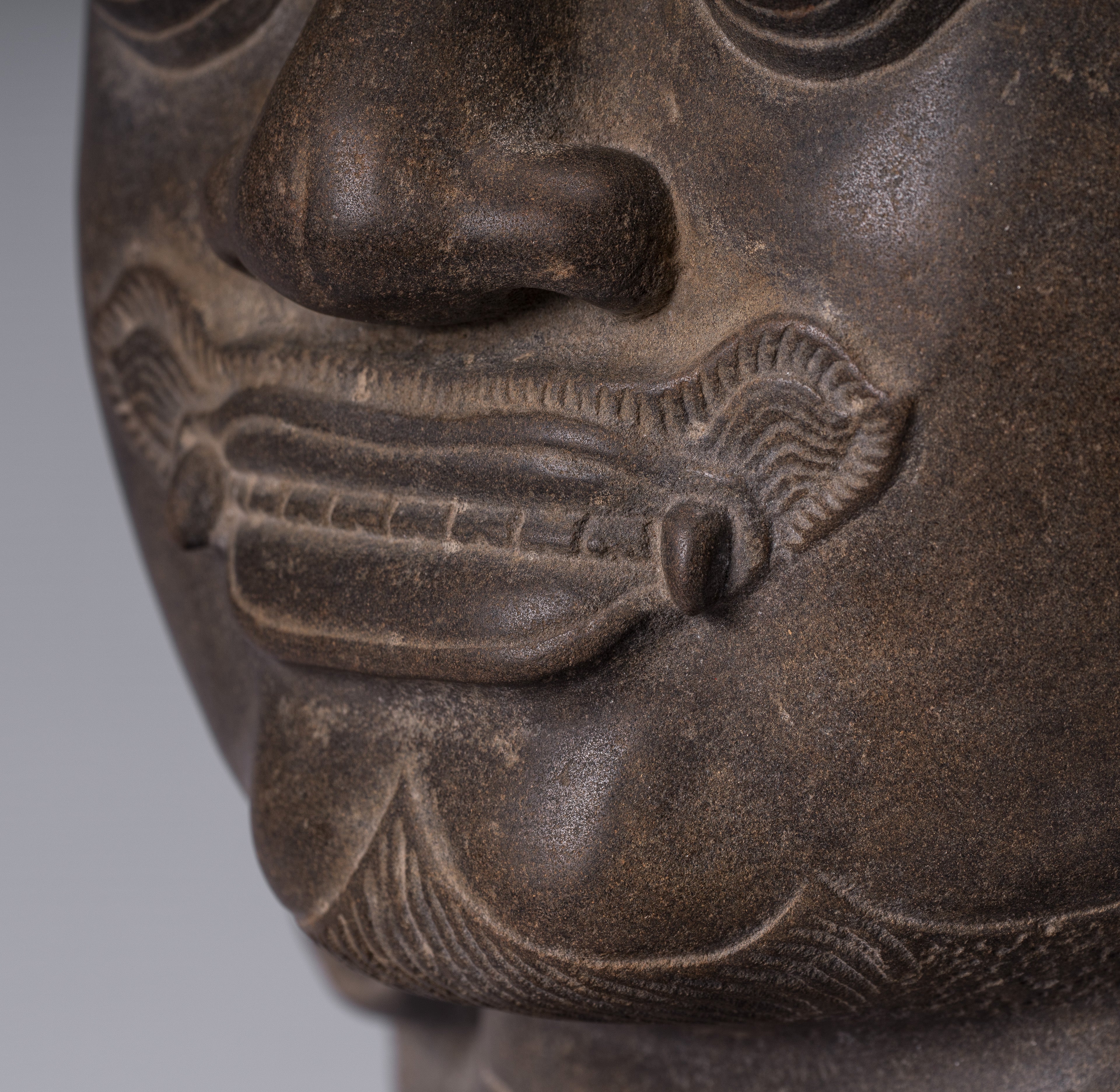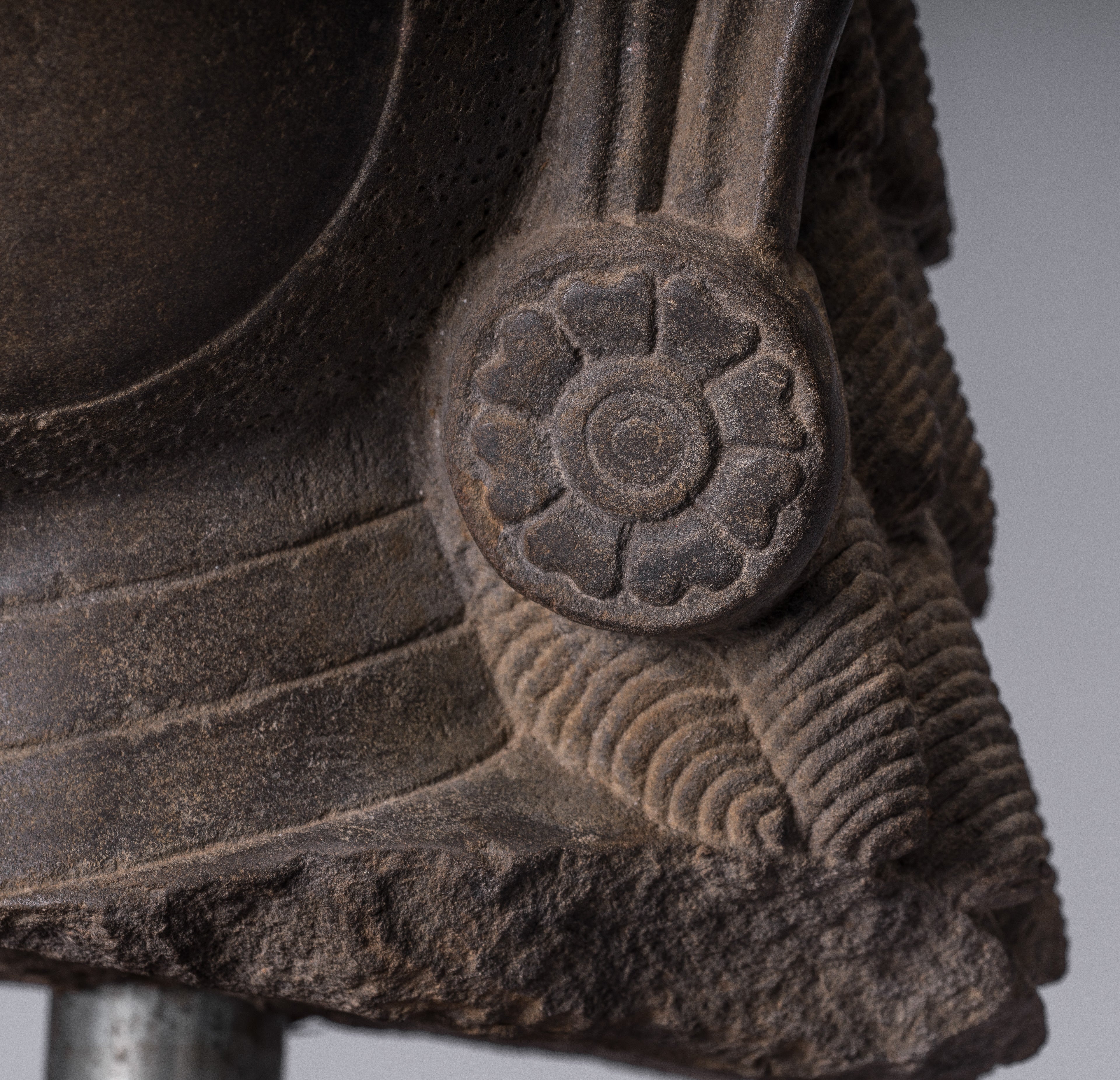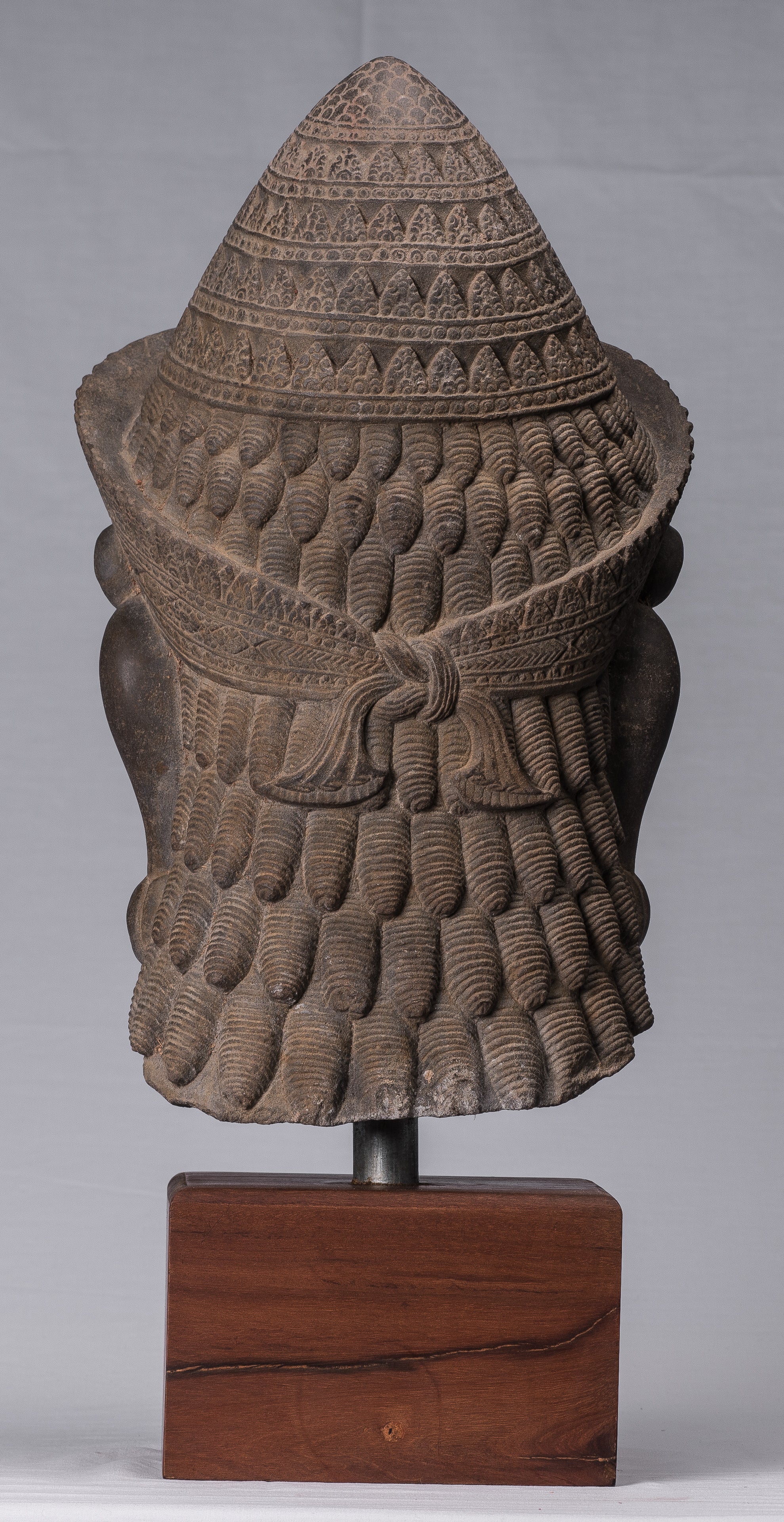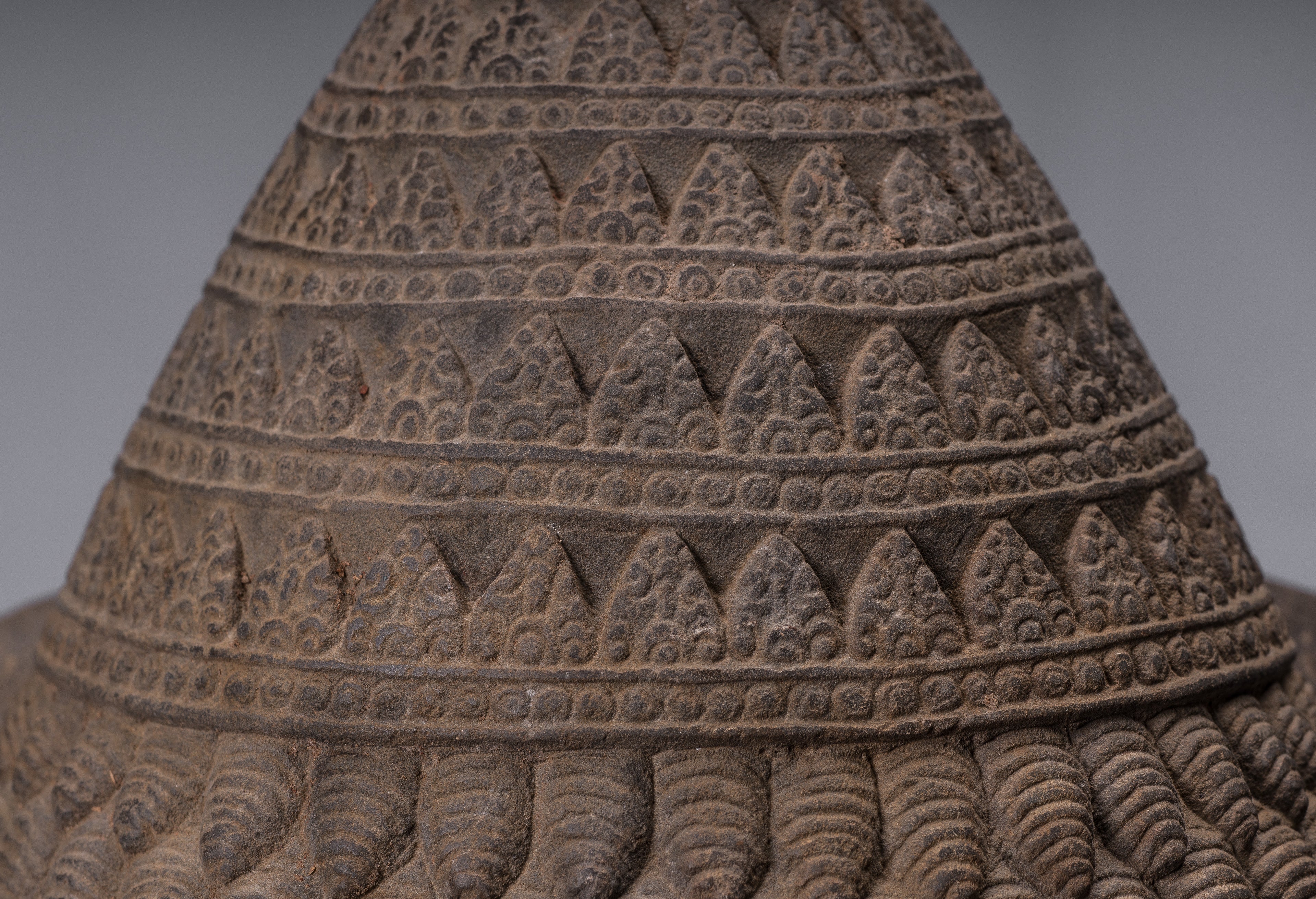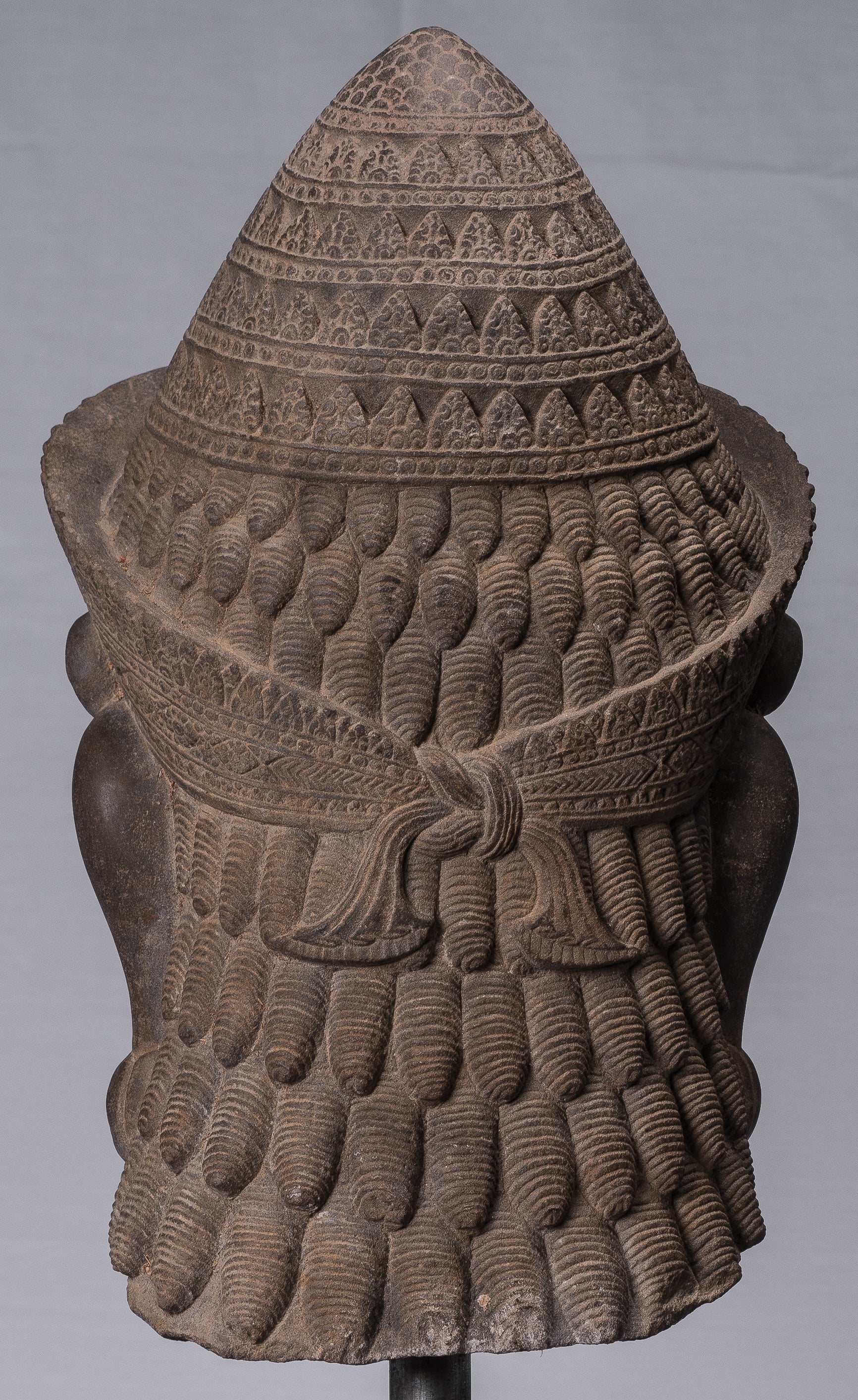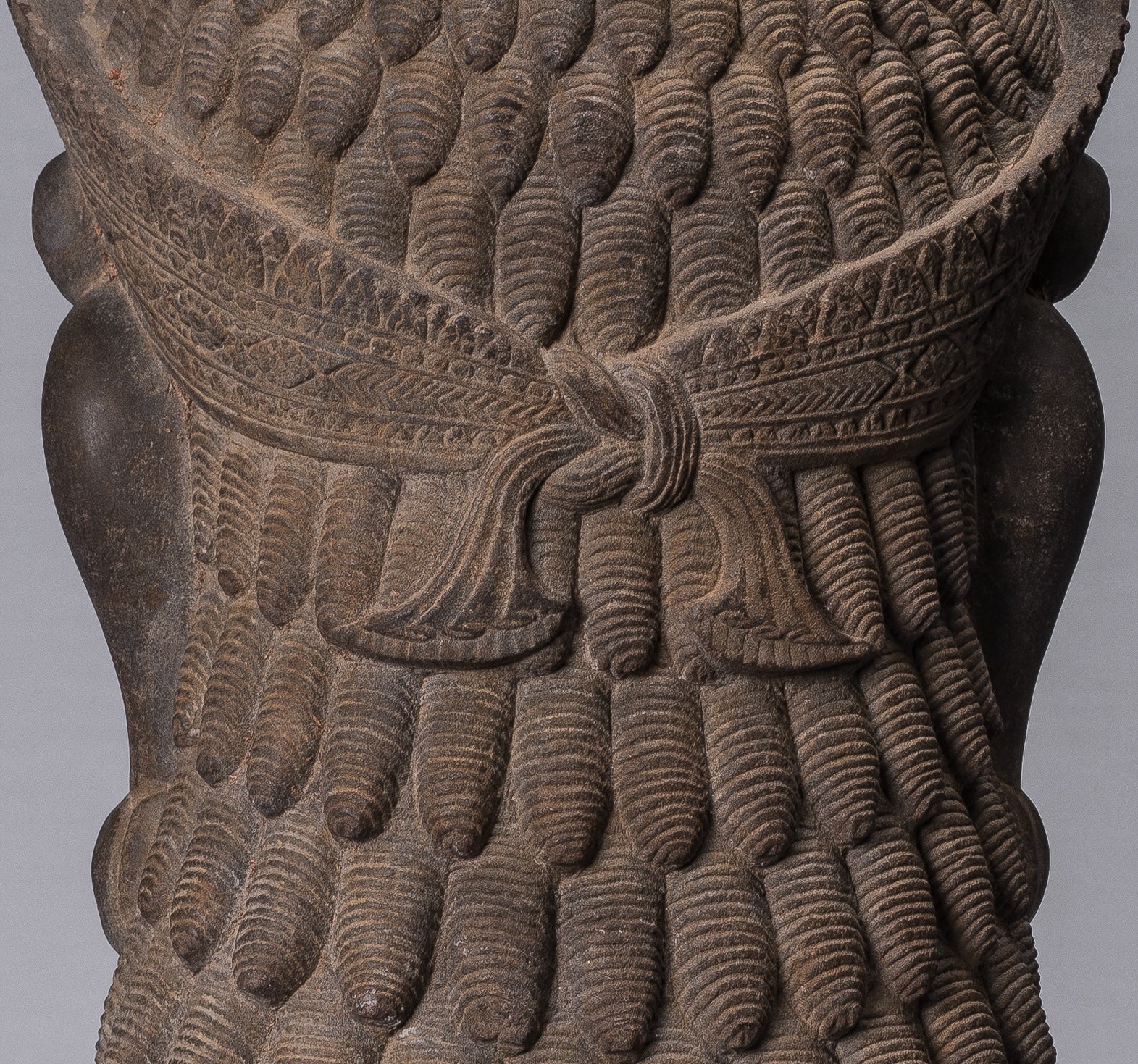-
Antique Khmer Stone Mounted Banteay Srei Style Yaksha Temple Guardian - 58cm / 23"
Measures (Height) 58cm/23"
An antique Khmer style stone Yaksha or Guardian in pre-Angkor Banteay Srei 10th century style.
The Yaksha is carved in the style of those seen at the great Banteay Srei temple in Cambodia - a 10th-century Cambodian temple dedicated to the Hindu god Shiva, located in the area of Angkor.
The Yakshas are a broad class of nature-spirits, usually benevolent, but sometimes mischievous or capricious, connected with water, fertility, trees, the forest, treasure and wilderness. They appear in Hindu, Jain and Buddhist texts, as well as ancient and medieval era temples of South Asia and Southeast Asia as guardian deities.
In Hindu, Jain, and Buddhist texts, the yaksha has a dual personality. On the one hand, a yaksha may be an inoffensive nature-fairy, associated with woods and mountains; but there is also a darker version of the yaksha, which is a kind of ghost that haunts the wilderness and waylays and devours travellers, similar to the raksasas.
As is traditional, this image of Yaksha is defined by bulging eyes and fangs emanating from the mouth. The Yaksha has a curvy moustache, stippled beard and ear with scalloped inner rim. The hair is dressed in a tiered chignon in the Angkor Wat style. A diadem surrounds the chignon.
The size of the head suggests that it may once have served as a significant guardian figure. Forming part of a larger stone sculpture.
The Bantreay Srei style developed at the same time as the Pre Rup style and overlaps that of the Kleang. It uses and develops the formulas of the Koh Ker style, the headdress with horizontal tresses and the conical mukuta.
The anatomy shows a strong sense of observation. The overall silhouette is elegant and a reminder of the Pre Angkorian Art. The ornate carving of the diadem provide a delightful contrast with the smooth facial features.
A conical three tier chignon-cover surmounts the head and is surrounded by a diadem tied in the back with a bow knot, typical of the Banteay Srei period. Generally, the statues are small in size, but in scale with the temple, a feeling of elegance and softness is given off by the whole.
The image radiates an aloofness, the quiet power of Yaksha and the sensuality typical of the Banteay Srei period.
Scholarly Reference:
New York Metropolitan Museum Collection - Accession Number: 1987.142.15 Christie's Auction House - Sale 13482 (May 2016) - The Dani & Anna Ghigo Collection: Part I: South East Asian, Himalayan and Indian Works of Art
Provenance: Ex- private US Collection.
All items are guaranteed to be as described. A Certificate of Authenticity will accompany all purchases upon request. The perfect traditional in appearance sculpture to bring serenity and timeless style to you home, office or sacred space.
SATISFACTION GUARANTEE - We have been offering SE Asian Art for many years and are proud of the reputation we have developed for fair and honest listings. However, if for any reason, whatsoever, you are unhappy with your purchase please just let us know and we will provide a full refund. We want you to be 100% happy with your purchase.
-
The majority of orders will be shipped with DHL. This is a secure, express and fully tracked service.
Items less than 2Kg we typically ship using Royal Mail.
Once we receive your order we try to ship all orders the same or next working day.
Large and/or fragile pieces requiring palletising, specialist crating and/or extra packaging may take a little longer. Palletised shipments will be delivered curbside.
All orders over 35 GBP will be shipped free of charge.

-
We genuinely hope that all purchases delight.
However, if they do not, regardless of reason, we will refund all orders upon receipt of the unwanted item. Just notify us within 14 days of receiving your order that you wish to make a return and send the piece back to us with 30 days of delivery.
A wooden Buddha statue is far more than a decorative object; it is a warm, living presence that brings serenity, symbolism, and craftsmanship into any space.
On HD Asian Art, each wooden Buddha sculpture is carefully curated for authenticity, beauty, and spiritual resonance, making every piece a meaningful addition to home, office, or shrine.


